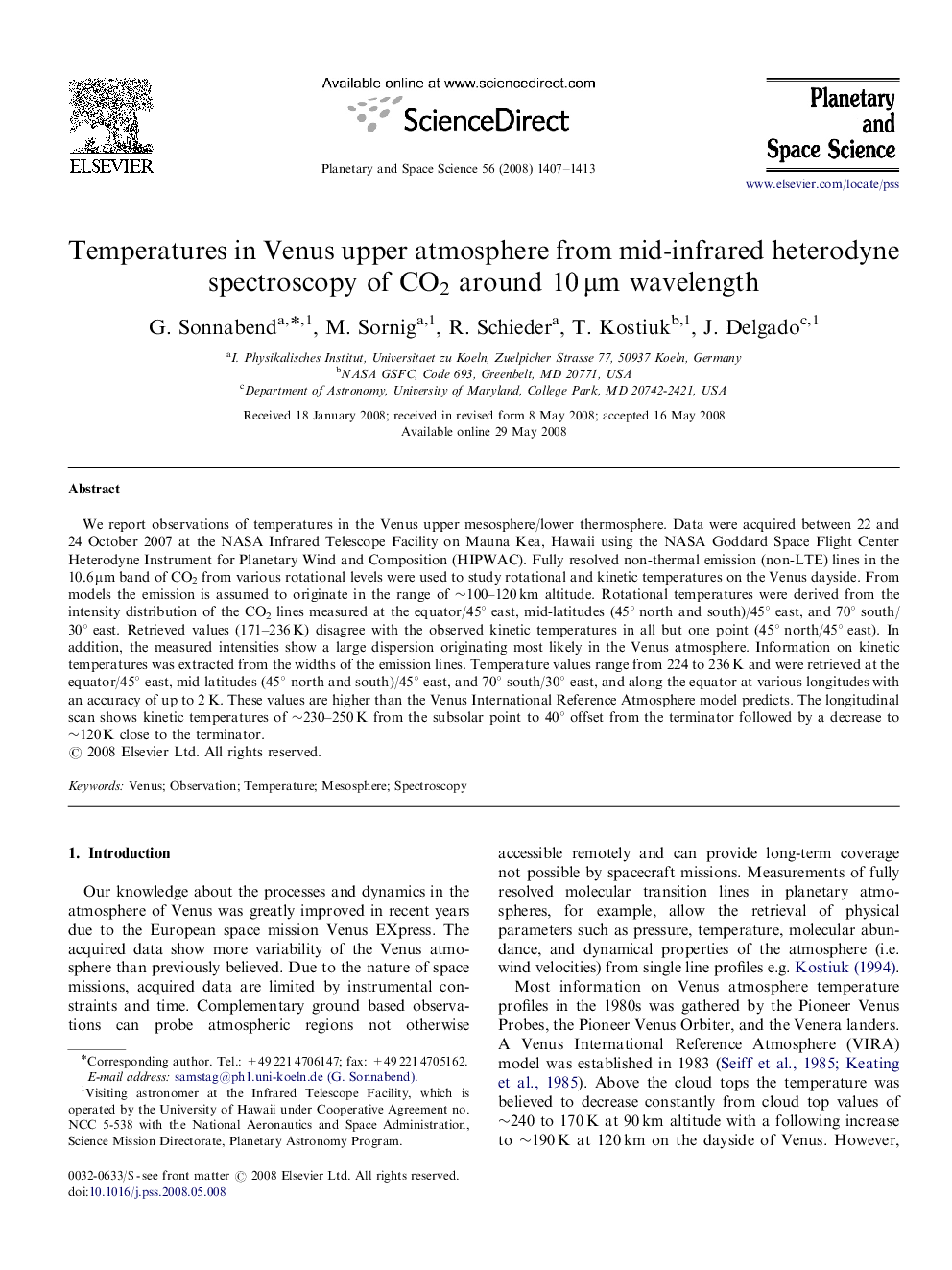| Article ID | Journal | Published Year | Pages | File Type |
|---|---|---|---|---|
| 1782606 | Planetary and Space Science | 2008 | 7 Pages |
Abstract
We report observations of temperatures in the Venus upper mesosphere/lower thermosphere. Data were acquired between 22 and 24 October 2007 at the NASA Infrared Telescope Facility on Mauna Kea, Hawaii using the NASA Goddard Space Flight Center Heterodyne Instrument for Planetary Wind and Composition (HIPWAC). Fully resolved non-thermal emission (non-LTE) lines in the 10.6μm band of CO2 from various rotational levels were used to study rotational and kinetic temperatures on the Venus dayside. From models the emission is assumed to originate in the range of â¼100-120 km altitude. Rotational temperatures were derived from the intensity distribution of the CO2 lines measured at the equator/45° east, mid-latitudes (45° north and south)/45° east, and 70° south/30° east. Retrieved values (171-236 K) disagree with the observed kinetic temperatures in all but one point (45° north/45° east). In addition, the measured intensities show a large dispersion originating most likely in the Venus atmosphere. Information on kinetic temperatures was extracted from the widths of the emission lines. Temperature values range from 224 to 236 K and were retrieved at the equator/45° east, mid-latitudes (45° north and south)/45° east, and 70° south/30° east, and along the equator at various longitudes with an accuracy of up to 2 K. These values are higher than the Venus International Reference Atmosphere model predicts. The longitudinal scan shows kinetic temperatures of â¼230-250 K from the subsolar point to 40° offset from the terminator followed by a decrease to â¼120K close to the terminator.
Related Topics
Physical Sciences and Engineering
Earth and Planetary Sciences
Geophysics
Authors
G. Sonnabend, M. Sornig, R. Schieder, T. Kostiuk, J. Delgado,
